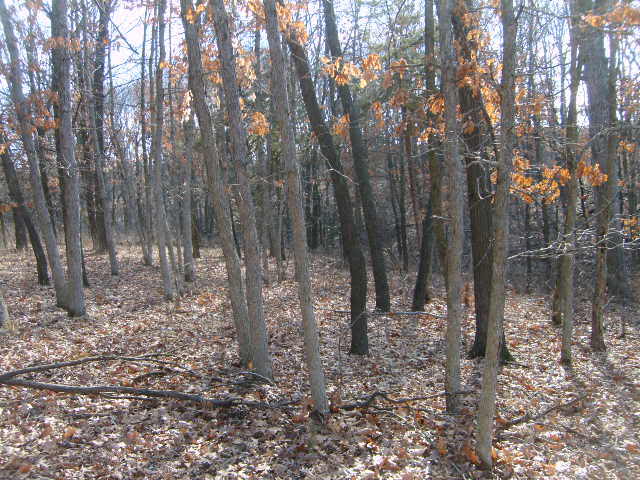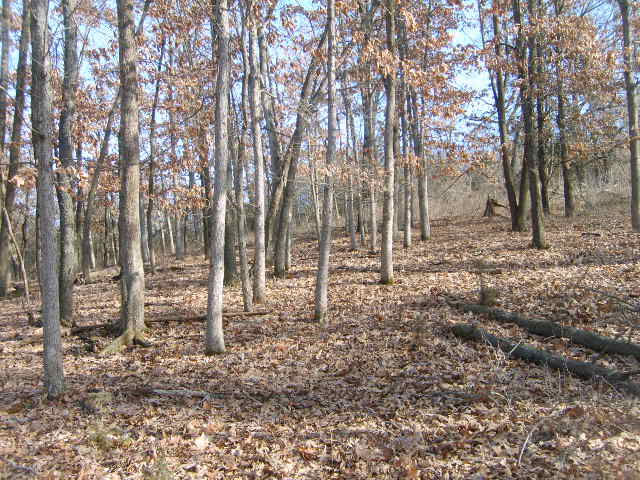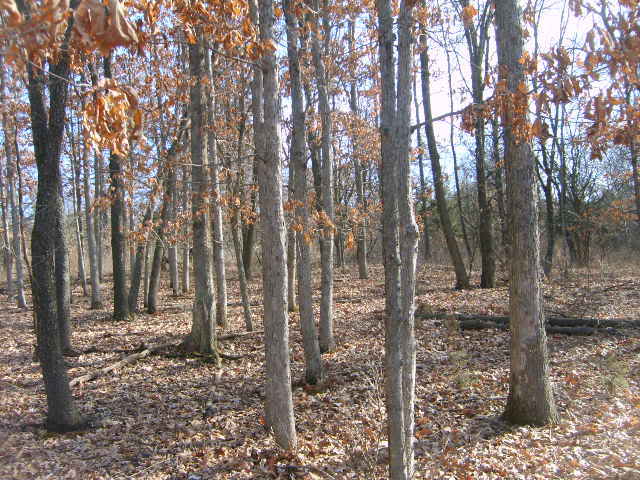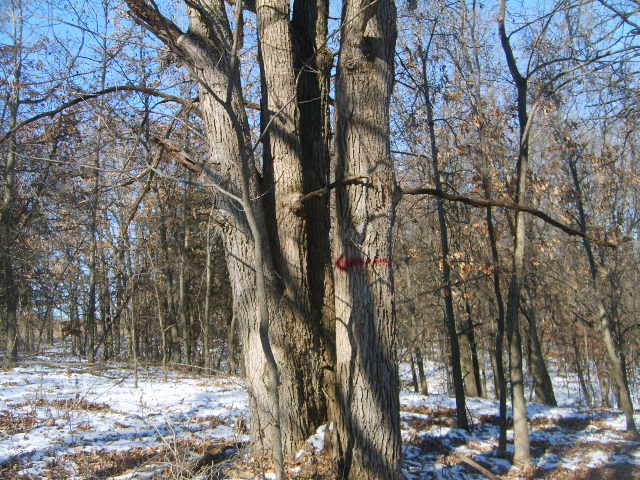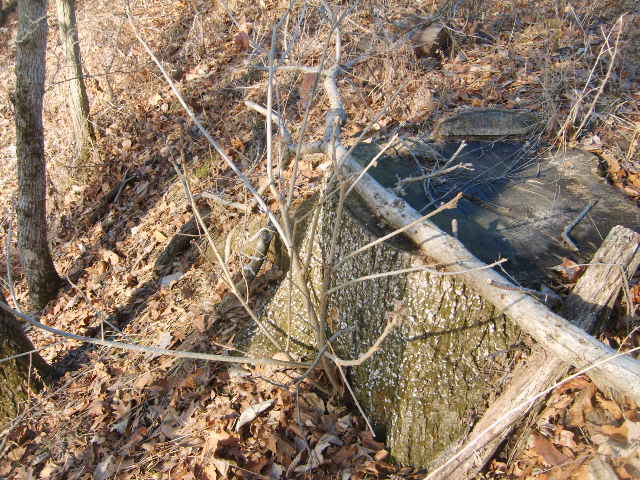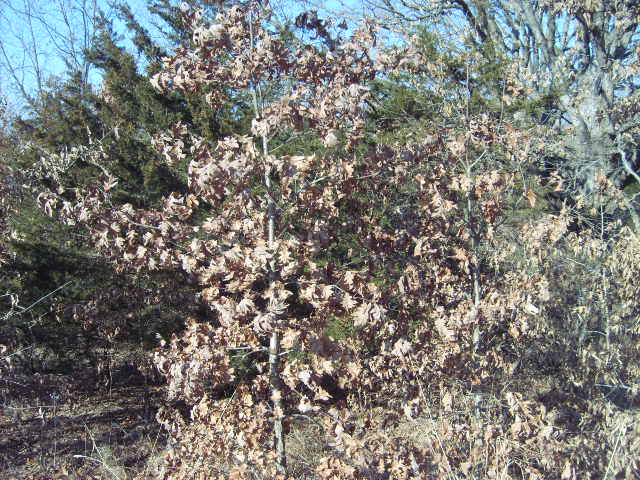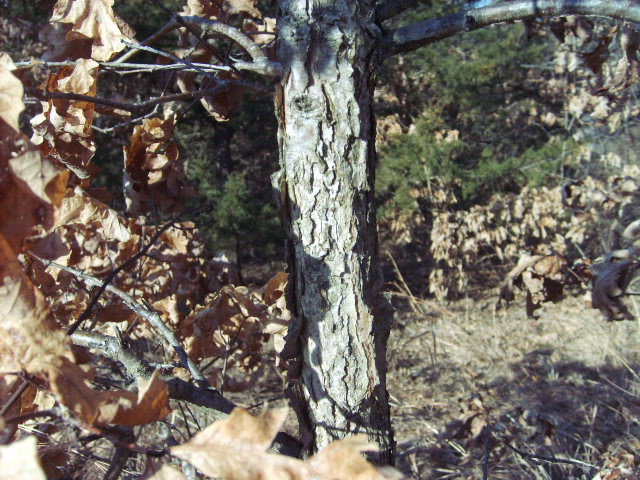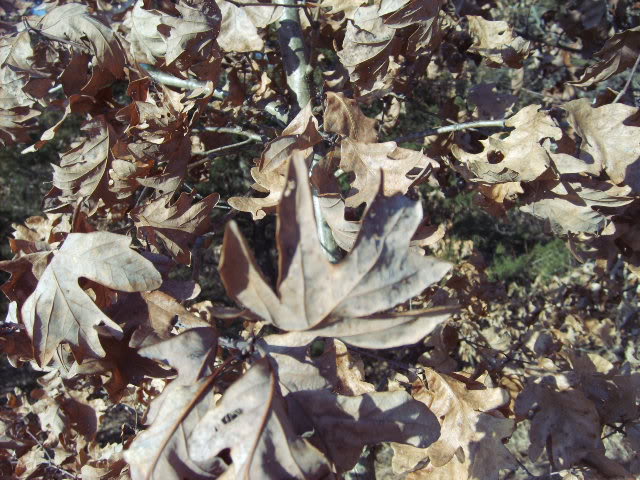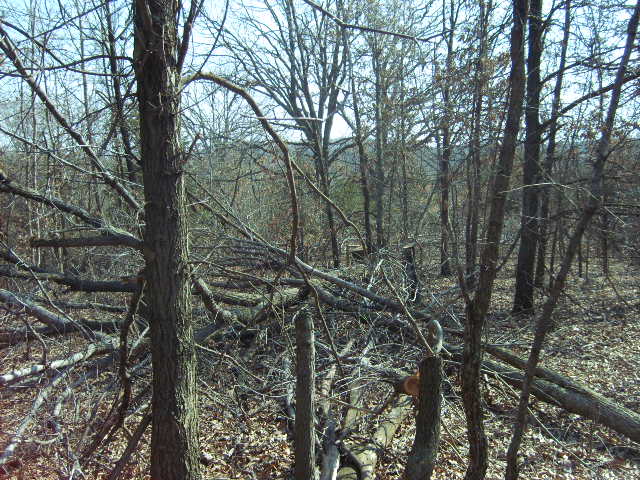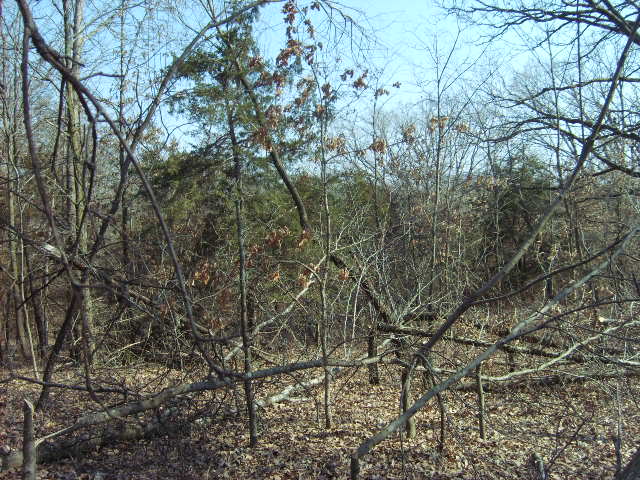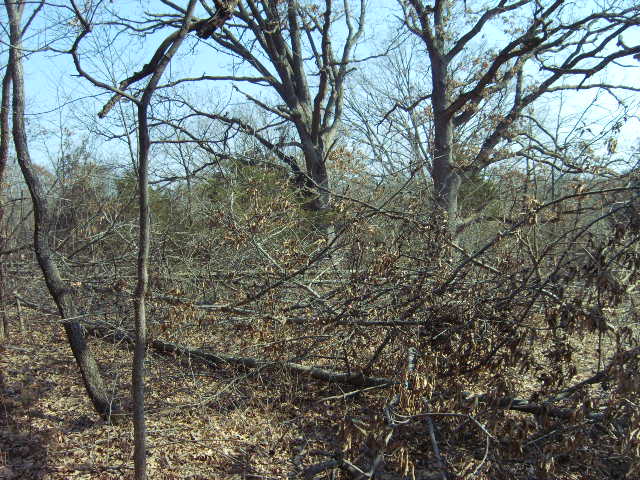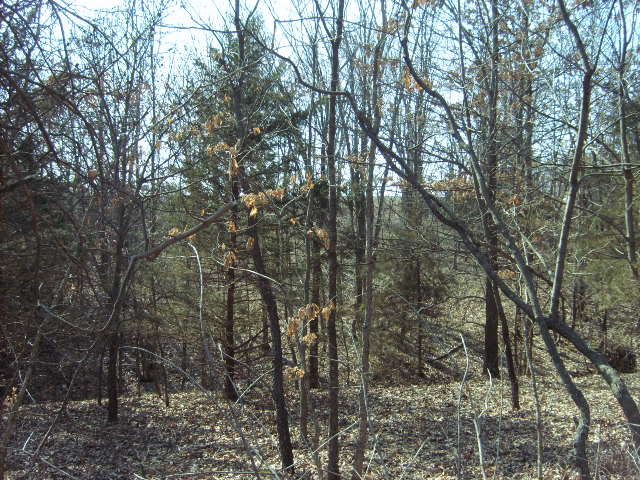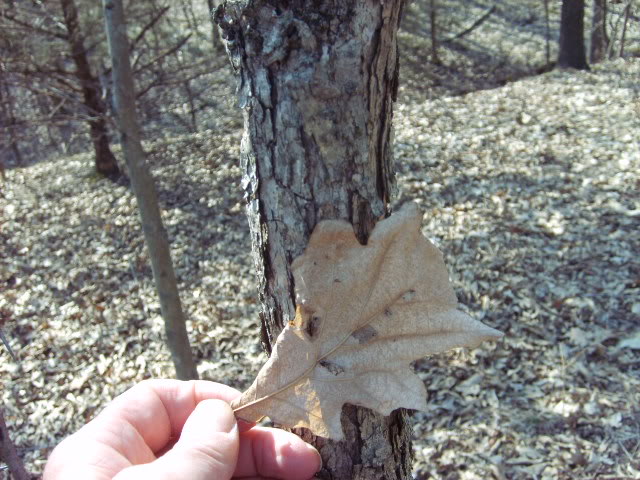Re: Timber Stand Improvment - identifing trees
Now that I have done Timber Stand Improvment, learned to identify tree species and which ones are shade tolerant versus oaks (which are NOT shade tolerant) I've been much more aware of what's actually growing on my property.
There's a whole lot more young white oaks then I previously had been aware of... /forum/images/%%GRAEMLIN_URL%%/cool.gif
They are relatively easy to find by searching out the huge parent trees and then finding the young white oaks around the perimeter areas.
In some of these areas I chose to hinge cut "cull" trees around the "baby" white oaks to give them light and growing room.
There is no need to worry about the huge parent oaks, they are mature and nothing is going to phase them now. The little oaks however don't stand a chance under the shade tolerant hickories, elms and locust trees.
So I search out these little white oaks which still have their leaves even here in late March.
Even from a distance the WO leaves are darker then the ever common shingle oaks and readily noticable as I walk thru the timber.
Most crop trees are released by girdling or "hack n squirt" using Tordon but I had several areas that were way to open so hinging junk trees to create a bedding area and releasing the young oaks will work well.
Much of our timber here in Iowa is rapidly changing over from oak to hickory, maple, ironwood, locust and shingle oaks...none of which have the kind of timber or hard mast value that white oaks do.
Burning and TSI culling methods are a couple ways of reversing this trend.
When it comes to holding whitetails on our property...white oaks are far and away superior then any of other species mentioned above.
Take time to learn more about your timber or wooded areas and start encouraging white oaks that may be growing there or by killing trees and replanting oaks either with acorns or seedlings. /forum/images/%%GRAEMLIN_URL%%/cool.gif






